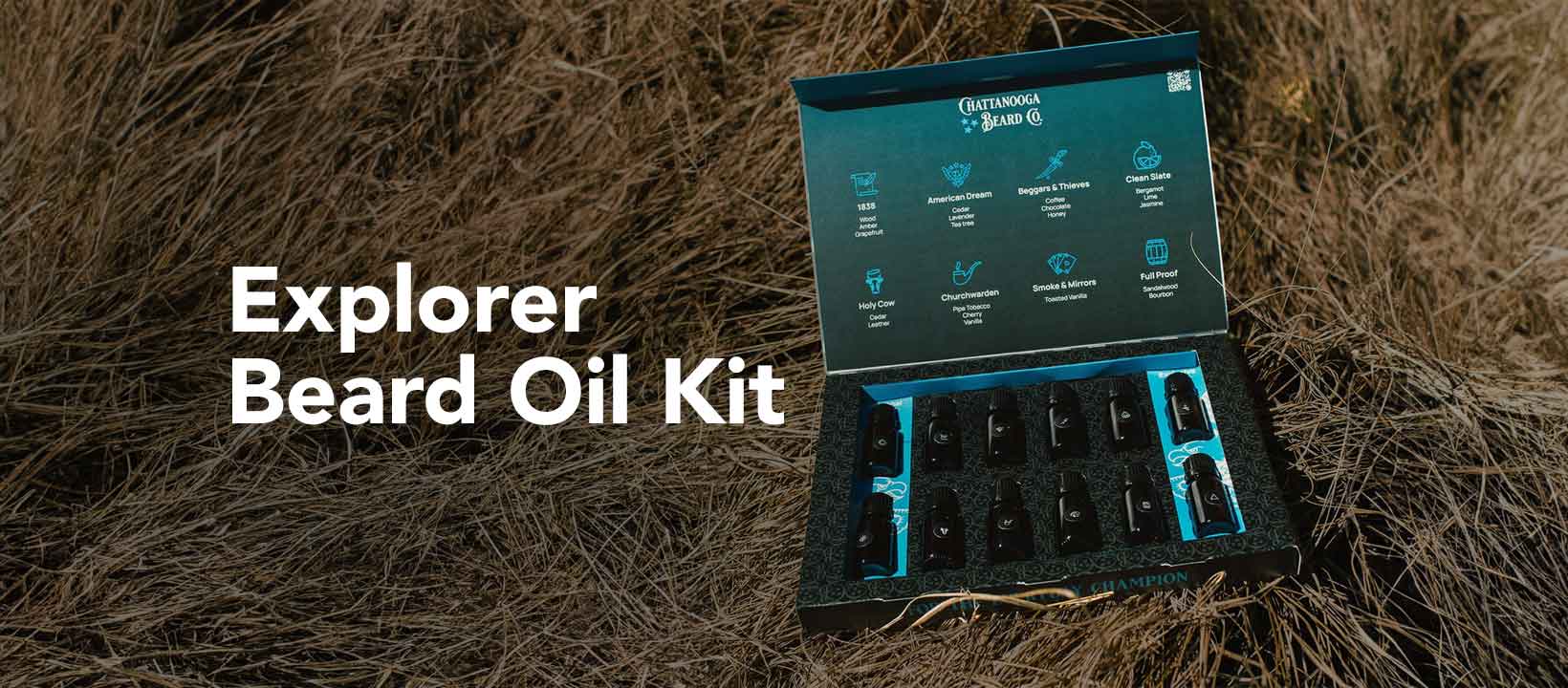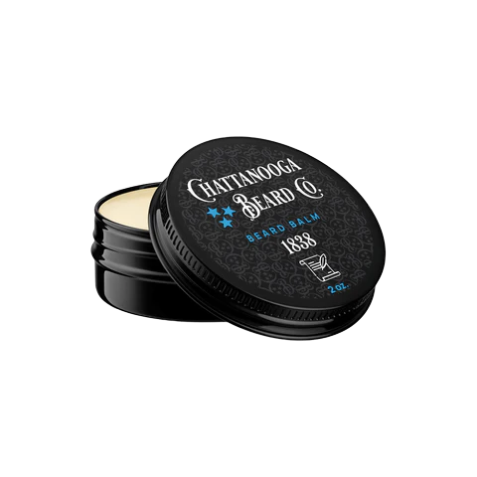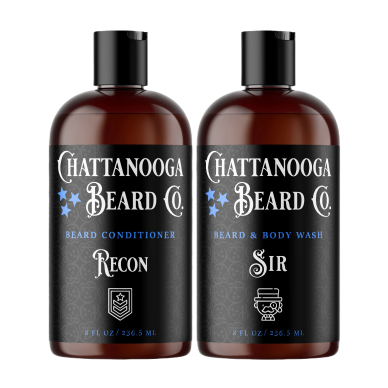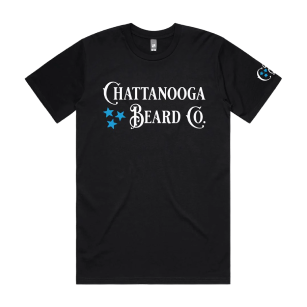What Do I Need for Beard Care: A Complete Grooming Regimen
- Establishing a Beard Care Regimen
- Understanding Beard Grooming Products
- Effective Beard Grooming Routine
- Proper Use of Beard Oil and Balm
- Shaping, Trimming, and Styling Your Beard
- Tips for Short and Mid-Length Beard Care
- Best Practices for Healthy Beard Growth
- Troubleshooting Common Beard Issues
- Expert Tips from Dermatologists for Beard Maintenance
- Closing Thoughts
- Frequently Asked Questions
Knowing the essentials is key. Our comprehensive guide covers everything you need for proper beard maintenance and grooming, including facial skin. From essential tools like quality trimmers, shears, and combs to understanding which products work best for different beard types, we've got you covered. We'll delve into the importance of regular washing, conditioning, and moisturizing as well as tips for shaping and styling your facial hair and established beard. Whether you're new to growing a beard or looking to elevate your grooming routine, our expert advice will help you achieve a healthy and stylish look effortlessly.
Establishing a Beard Care Regimen
Assessing Beard Length and Growth Pattern
The first step is understanding our unique beard length and growth pattern. This helps us choose the most suitable products for our needs. For instance, if we have a long, thick beard, we may require different grooming tools compared to someone with a shorter or sparser beard. By assessing our beard's length and growth pattern, we can tailor our beard care regimen accordingly.
Understanding how fast our beards grow also influences how frequently we need to groom them. If our facial hair grows quickly, we might need more frequent trims and maintenance compared to those with slower-growing beards. This knowledge guides us in establishing an effective grooming schedule that keeps our beards looking their best without overdoing it.
Choosing the Right Products for Our Skin Type
Selecting appropriate beard care products is crucial for maintaining healthy facial hair and skin. We must consider factors such as skin sensitivity, dryness or oiliness when choosing products like beard oils, shampoos, conditioners, and combs. For example, if some of us have sensitive skin prone to irritation, selecting gentle, natural ingredients can prevent discomfort while promoting overall skin health.
Moreover, established beards may require different types of maintenance than newer ones due to varying levels of thickness and coarseness in the hair strands. Therefore, it's essential to opt for products specifically designed for longer or denser beards that provide adequate nourishment from root to tip.
Understanding Beard Grooming Products
Different Types
Using the right products is essential. There are various types of grooming products such as beard oils, balms, and washes. Beard oil helps moisturize the skin underneath the beard and keeps facial hair soft. On the other hand, beard balm not only conditions the hair but also provides a light hold for styling. Using a specialized beard wash can help keep both your skin and facial hair clean without stripping away natural oils.
Understanding these different types of grooming products allows us to choose what suits our needs best.
Benefits of Natural Ingredients
Choosing grooming products with natural ingredients offers several benefits. Natural ingredients like coconut oil, lanolin, and shea butter provide nourishment to both the skin and hair without causing irritation or adverse reactions. These ingredients also help prevent itchiness and dryness while promoting healthy beard growth.
By opting for grooming products with natural components, we ensure that our beards receive gentle care without exposure to harsh chemicals.
Scent and Texture Preferences
When selecting grooming products for our beards, considering scent and texture preferences is crucial. Some may prefer lightly scented oils or balms with refreshing citrus notes, while others might lean towards earthy or woody aromas. Similarly, individuals may have specific texture preferences – some might favor lightweight oils that absorb quickly into their beards without leaving a greasy residue; others might opt for thicker balms that offer more control over their unruly facial hair.
Taking into account our personal scent and texture preferences ensures that we enjoy using the grooming products daily as part of our beard care regimen.
Effective Beard Grooming Routine
Gentle Beard Wash
Using a gentle beard wash is essential. This helps to cleanse the beard and soften the hair, preventing any dirt or grime from accumulating. A mild, natural-based cleanser can effectively clean the beard without stripping away its natural oils.
A quality beard wash not only keeps your facial hair clean but also ensures that it stays hydrated and healthy. It's important to look for a product specifically formulated for beards as regular shampoos may contain harsh chemicals that can cause dryness and irritation.
Use of Quality Beard Comb or Brush
In addition to washing, using a great quality beard comb or brush is crucial for effective grooming. These wide tooth combs help detangle the hair and distribute natural oils evenly throughout the beard. Wooden combs with wide teeth are ideal for untangling knots without causing breakage.
By regularly combing or brushing your beard, you're not only keeping it neat and tidy but also stimulating blood flow to the hair follicles, which promotes healthy growth.
Application of Beard Oil or Balm
After cleansing and grooming your beard, applying beard oil or balm is an important step in maintaining its health and appearance. These balm products help moisturize the skin underneath the beard while conditioning the hair itself.
Beard oil typically contains carrier oils such sweet almond oil or argon oil along with essential oils like lavender or sandalwood, providing hydration and a pleasant scent at the same time. On the other hand, balms offer similar benefits while providing some hold for styling purposes.
Proper Use of Beard Oil and Balm
Using Beard Oil
Using the right amount of beard oil is crucial. For shorter beards, a few drops of beard oil are sufficient. However, for longer beards, more beard oil is needed to ensure thorough coverage. The application process involves warming the oils by rubbing them between our palms before gently massaging them into our beard. Focusing on massaging the natural oils into the skin beneath the beard promotes healthy hair growth.
Beard oils containing natural ingredients like sweet almond or argan oil provide essential nutrients that nourish both facial hair and the underlying skin. These natural oils help prevent dryness and itchiness while promoting soft and manageable facial hair.
Applying beard oil not only hydrates and conditions our facial hair but also helps in preventing dandruff and split ends. By incorporating this step into our grooming routine, we can maintain a healthy-looking beard that feels great!
Applying Beard Balm
When dealing with unruly or coarse facial hair, applying beard balms becomes essential in shaping and styling our beard effectively. Warming a small amount of balm between our palms allows for even distribution throughout the entire beard.
The use of beeswax in many natural-based balms provides a light hold that keeps stray hairs in place without feeling heavy or greasy. This makes it easier for us to style our beards as desired without compromising on its natural look.
Focusing on massaging the balm into both the beard and underlying skin ensures that all areas receive proper nourishment from its natural ingredients such as shea butter or cocoa butter which deeply moisturize both hair follicles and skin underneath.
Incorporating these steps consistently into our grooming routine will result in healthier, softer, more manageable beards overall.
Shaping, Trimming, and Styling Your Beard
Investing in Quality Tools
Having the right tools like a beard comb is crucial for maintaining a well-groomed look. High-quality trimming tools such as shears and clippers are essential for achieving precise shaping and maintenance. These tools allow us to experiment with different styles, ensuring we find the one that best suits our face shape. By investing in top-notch trimming equipment, we can easily achieve the desired facial hair style while ensuring our beard remains neat and well-maintained.
Finding the right tools like a wide tooth comb also enables us to effectively manage any ingrown hairs or split ends that may occur. Regularly trimming these unwanted strands not only helps maintain a tidy appearance but also promotes healthier facial skin. This is essential for achieving a polished gentleman's look while keeping our facial skin free from irritation caused by unkempt beard hair.
Maintaining Neatness and Health
Regular grooming helps us control our beard's appearance, making sure it always looks its best. It allows us to style our beard according to different occasions or personal preferences, giving us the freedom to switch up our look whenever we want.
In addition to using quality trimming tools, incorporating proper conditioning into our routine is vital for maintaining healthy facial hair. Using conditioner specifically designed for beards during showers ensures that each strand receives the nourishment it needs. This not only keeps our beard looking great but also prevents split ends from occurring frequently.
Tips for Short and Mid-Length Beard Care
Regular Trims for Short Beards
We've found that keeping our short beards well-groomed is essential. Regular trims help to maintain a neat appearance, prevent split ends, and promote healthy growth. By trimming the beard every few weeks, we can ensure that it stays at the desired length without looking unkempt.
We stick to a minimal routine. Using a small amount of beard oil helps keep the hair moisturized and prevents itchiness. It's important not to overdo it with products as this can lead to buildup and make the beard appear greasy.
Deep Conditioning for Mid-Length Beards
For those of us with mid-length beards, deep conditioning becomes crucial in our beard care routine. We've learned that applying a deep conditioning treatment once or twice a week helps keep the hair soft, manageable, and less prone to tangling. This step is especially vital as longer beard hairs are more susceptible to dryness and brittleness.
In addition to regular conditioning treatments, using a wide-tooth comb helps distribute the conditioner evenly throughout the beard while detangling any knots or snags.
Styling Techniques for Managing Unruly Hairs
When dealing with mid-length beards, taming unruly hairs becomes one of our main concerns. To help manage these wild strands effectively without compromising on style or comfort, we turn to styling techniques such as wax, pomade, and comb.
Wax provides a stronger hold and is ideal for shaping specific areas of the beard while pomade offers flexibility along with moderate control. With just a small amount of either product applied evenly through damp hair, we're able to achieve sleek looks without weighing down our beards.
Best Practices for Healthy Beard Growth
Balanced Diet
To ensure healthy beard growth, we need to maintain a balanced diet. Consuming foods rich in vitamins and proteins is crucial for optimal beard growth. For instance, including lean meats, fish, eggs, nuts, and leafy greens in our diet can provide essential nutrients like vitamin A, C, E, and protein that promote overall health.
A diet lacking in these essential nutrients may lead to stunted beard growth. Therefore, it's important to incorporate a variety of fruits and vegetables into our meals to support the healthy development of facial hair. By consuming a well-rounded diet with the necessary nutrients, we can enhance the quality of our beards.
Good Hygiene
Practicing good hygiene is another key factor in promoting healthy beard growth. Regularly washing the beard with a gentle cleanser helps prevent bacterial buildup that can hinder its growth. Keeping the skin beneath the beard clean is vital as it prevents clogged pores or infections that could impede hair follicles from thriving.
By maintaining proper hygiene habits such as regular washing and exfoliating the skin under our beards using mild products suitable for facial use only; we create an environment conducive to healthy hair growth on our faces.
Boar Bristle Brush
Considering using a boar bristle brush is also beneficial for stimulating blood flow and promoting healthy hair growth. The bristles help distribute natural oils evenly throughout the beard while gently exfoliating the skin underneath.
Using this type of brush not only aids in preventing ingrown hairs but also assists in training facial hairs to grow downwards rather than becoming unruly or curly. This practice supports healthier-looking beards by ensuring even distribution of natural oils produced by sebaceous glands across each strand of hair.
Troubleshooting Common Beard Issues
Address Dryness and Itchiness
We've all experienced the annoyance of a dry, itchy beard. To combat this, we need to use hydrating products that contain natural moisturizers like shea butter or argan oil. These ingredients help to lock in moisture and prevent our skin from becoming dry and flaky. By regularly applying these products, we can keep our beards soft, smooth, and itch-free.
When choosing beard care products, look for ones specifically formulated to hydrate both the hair and the skin underneath. These will provide double-duty moisture for maximum relief from dryness and itchiness. Using a beard oil enriched with essential oils such as jojoba or coconut can further nourish the skin while adding a pleasant scent to our beards.
Combat Ingrown Hairs
Dealing with ingrown hairs can be frustrating, but there are steps we can take to minimize their occurrence. Regular exfoliation is key in preventing ingrown hairs by removing dead skin cells that could clog hair follicles. This helps ensure that new hair growth can emerge without obstruction.
Another important factor in preventing ingrown hairs is avoiding overly tight shaving techniques that may cause the hair to grow back into the skin instead of outward. Instead of pulling the skin taut when shaving, opt for gentle strokes with minimal pressure to allow for smoother regrowth.
Seek Professional Advice
If any of us experience persistent irritation or unusual hair loss related to our beards despite following best practices for healthy growth, seeking professional advice is crucial. A dermatologist or a qualified barber specializing in beard care can provide personalized recommendations tailored to our specific needs.
Professional insight becomes especially important if over-the-counter remedies fail to alleviate persistent issues such as severe itching or redness on the face due to beard grooming products. In some cases, these symptoms might indicate an underlying condition requiring medical attention rather than simple at-home remedies.
Expert Tips from Dermatologists for Beard Maintenance
Patch Testing New Products
When trying new products for beard care, we should always patch test them first. This means applying a small amount of the product to a discreet area of our skin and waiting 24 hours to see if any adverse reactions occur. By doing this, we can avoid potential allergic reactions or irritation on our faces.
It's important to remember that even natural ingredients can cause allergies or irritations in some people. For example, essential oils like tea tree oil and lavender are commonly used in beard oils but can cause contact dermatitis in individuals with sensitive skin. Therefore, patch testing is crucial before incorporating any new product into our skin care routine.
Clean and Sanitize Grooming Tools
To maintain healthy facial hair and beard oils, it's vital to regularly clean and sanitize our grooming tools. These tools come into direct contact with our skin and hair follicles, making them susceptible to bacterial contamination if not properly maintained.
We should make it a habit to wash combs, brushes, trimmers, and scissors after each use using mild soap or shampoo. Sanitizing these tools with rubbing alcohol can help eliminate bacteria that may have accumulated over time.
By keeping our grooming tools clean and sanitized, we reduce the risk of developing skin issues such as folliculitis (inflammation of the hair follicles) or other bacterial infections that could affect the health of our beards.
Consult Dermatologist for Underlying Skin Conditions
If we have underlying skin conditions such as eczema or psoriasis that affect not only the skin on our face but also the growth and appearance of facial hair, consulting a dermatologist is imperative. These professionals specialize in diagnosing and treating various skin conditions that may impact beard maintenance.
Dermatologists can provide personalized recommendations based on individual needs while considering existing skin care routines. They may suggest specific products suitable for sensitive or acne-prone skin types while also addressing any concerns related to beard grooming techniques tailored to unique requirements.
Closing Thoughts
After delving into the intricacies of beard care, we have gained a comprehensive understanding of the essential practices and products for maintaining a healthy and well-groomed beard. From establishing a personalized grooming regimen to troubleshooting common issues, our exploration has equipped us with the knowledge to elevate our beard care routine. As we continue our journey towards optimal beard health, let's remember the expert tips shared by dermatologists and embrace a consistent grooming routine tailored to our unique needs. By prioritizing proper beard care, we can exude confidence and style while showcasing the best version of ourselves.
Let's commit to implementing the insights gained from this exploration into our daily grooming rituals. Our dedication to nurturing our beards will not only enhance our appearance but also contribute to our overall sense of well-being. Here's to embracing a thriving beard care routine that reflects our commitment to self-care and confidence. Together, let's embark on this journey towards impeccable beard maintenance.
Frequently Asked Questions
What are the essential products for beard care?
To maintain a healthy beard, you'll need a quality beard oil, beard balm or wax, a good beard comb or brush, and a gentle cleanser specifically designed for facial hair. These products help to moisturize, condition, and style your beard effectively.
How often should I groom my beard?
Regular grooming is crucial. Trim your beard every 2-4 weeks to maintain its shape and remove split ends. Daily maintenance involves applying beard oil to keep it soft and using a comb or brush to detangle and style it.
Is there any specific technique for applying beard oil and balm?
Apply a few drops of oils onto your palms then massage it into your skin and through the length of the hair. For balm/wax, scrape out a small amount with your thumbnail then warm between hands before applying evenly throughout the entire beard.
What are some common issues in maintaining beards?
Common issues include dryness leading to itchiness, ingrown hairs causing discomfort, patchy growth requiring creative styling techniques, as well as split ends that can affect overall appearance. Proper care with suitable products helps address these concerns effectively.
Should I seek professional advice for my specific Beard Care needs?
If you encounter persistent issues such as severe itching or unusual hair loss related to your facial hair care routine despite trying various remedies at home; consulting with dermatologists specialized in skincare can provide valuable insights tailored to individual needs.









